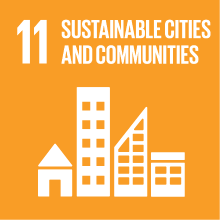ADVANCED MATERIALS FOR CONSERVATION
- Academic year
- 2024/2025 Syllabus of previous years
- Official course title
- ADVANCED MATERIALS FOR CONSERVATION
- Course code
- CM0575 (AF:513707 AR:286734)
- Modality
- On campus classes
- ECTS credits
- 6
- Degree level
- Master's Degree Programme (DM270)
- Educational sector code
- CHIM/02
- Period
- 1st Semester
- Course year
- 1
- Where
- VENEZIA
- Moodle
- Go to Moodle page
Contribution of the course to the overall degree programme goals
Students are required to attend at least 80% of all taught lessons.
Expected learning outcomes
To know and to be familiar with the advanced materials and nanomaterials used for conservation.
2. Ability to apply knowledge and understanding
Ability to apply this knowledge to practical CH applications.
3. Judgment skills
Ability to evaluate, in a reasoned manner, experimental results associated with advanced materials and nanomaterials used for conservation.
4. Communication skills
To use in an appropriate way the terminology and the symbolism learnt during the course.
To interact with the teachers and the classmates in a dynamic, effective and proper way,
5. Learning ability
To take notes during classes in a proper way, evidencing the topics according to their importance
By the end of the course the students will have an in depth appreciation for, and knowledge of, the various advanced materials and nanomaterials used for conservation.
Pre-requirements
Contents
After an introduction to nanomaterials and other types of material, the course will look at:
Physio-Chemical Processes in CH
Processes of Deterioration and Damage of CH
Common Nanosynthesis Methods
Consolidation & Preservation of Stone
Consolidation & Preservation of Wall Paintings
Preservation of Easel Paintings
Consolidation and Preservation of Wood
Consolidation and Preservation of Waterlogged Wood
Materials for Deacidification and Preservation of Paper, Documents and Textiles
Development of Inorganic Carbon Based Nanomaterials for Conservation
Photocatalytic and Self-Cleaning (superhydrophobic/hydrophilic Nanomaterials for Conservation
Antimicrobial and Antifungal Nanomaterials for Conservation
Chitosan and other biomaterials for Conservation
Geopolymers (artificial stone) in Cultural heritage
There will also be 3 compulsory Laboratory Sessions. The report on these wil constitute 20% of the final marks.
In these, the students will synthesise TiO2 nanoparticles via sol-gel nanosynthesis, coat them on hydraulic and non-hydraulic mortars, and measure any photocatalytic properies they may have against colouration by a dye.
Referral texts
Editors: Majid Hosseini and Ioannis Karapanagiotis (2018)
Available online via Ca’ Foscari at:
https://link.springer.com/book/10.1007/978-3-319-72260-3
Nanoscience for the Conservation of Works of Art
Editors: Piero Baglioni and David Chelazzi (2013) ISBN: 978-1-84973-566-7
Conservation Science : Heritage Materials
Editors: Eric May and Mark Jones (2006) ISBN-10: 0-85404-659-3
Both avaliable online from the Library.
Assessment methods
Written exam: The written exam will be questions in essay style, choosing 2 from 3 on subjects from the course, over two hours. During the exam, the use of notes, books and other teaching materials is not allowed (closed book).
Each question will be on one or two of the lecture subjects, and worth 20 marks. The students should demonstrate their knowledge of the subject, considering both the forms of materials used for conservation and their application to the relevant heritage area/objects - the exam is on the advanced materials used, not just general conservation techniques. This is the student's opportunity to show me what they have learned. The total marks out of 40 will be converted into a final mark out of 30.
Lab reports: These will count as 20% of the final marks, and should be emailed as a PDF before the Christmas holiday. Students are expected to write up each of the three experimental sessions separately, with an Introduction section, Experimental section, Results section and Conclusions and a summary of the key points and their significance, including relevant references. Although students will work in groups in the lab, their reports must all be their own individual work. A mark will be given out of 20, and converted into a mark out of 30.
The final mark will be the written Exam x 0.8 + Lab Report x 0.2, and will be rounded up where appropriate (e.g., 27.4/30 = 27/30, 27.5/30 = 28/30). Lode will only be given for exceptionally good answers to both questions and Lab Report.
Type of exam
Teaching methods
Teaching language
Further information
Accommodation and support services for students with disabilities and students with specific learning impairments:
Ca’ Foscari abides by Italian Law (Law 17/1999; Law 170/2010) regarding supportservices and accommodation available to students with disabilities. This includes students with mobility, visual, hearing and other disabilities (Law 17/1999), and specific learning impairments (Law 170/2010). In the case of disability or impairment that requires accommodations (i.e., alternate testing, readers, note takers or interpreters) please contact the Disability and Accessibility Offices in Student Services: disabilita@unive.it.
2030 Agenda for Sustainable Development Goals
This subject deals with topics related to the macro-area "Cities, infrastructure and social capital" and contributes to the achievement of one or more goals of U. N. Agenda for Sustainable Development


